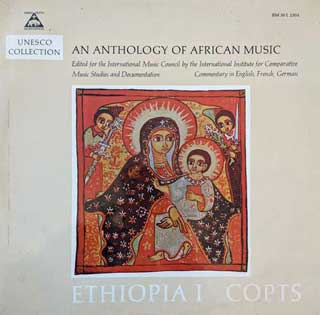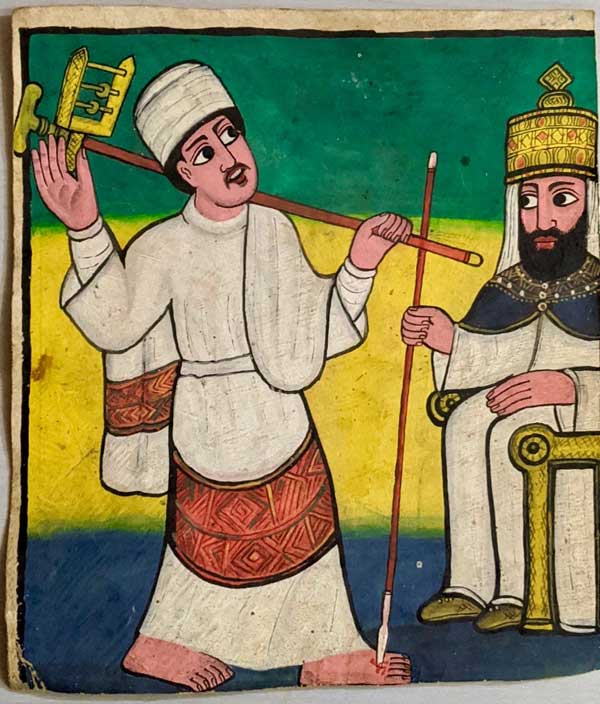Yared the Melodious was born in Axum around 501. He was named after the father of Enoch in the Bible (Genesis 5:18). Yared went to the church school but struggled to grasp the reading and memorization of the Psalms. Hagiography has it that he was inspired to persevere in learning while watching an ant managing to crawl up a tree’s bark only after six failed attempts.
Yared eventually became the father of Ethiopian traditional church education. He pioneered biblical interpretation, hymnody and liturgical dance, yet is best known for his musical compositions. His antiphonary books also contributed to the Qene poetry in classical Ethiopic.
According to Ethiopian tradition, God sent three white birds from heaven to Yared, foretelling him that he will learn to recite the hymnody of the 24 heavenly priests. Having seen the divine liturgy, Yared immediately began to compose poetic hymns and went to the sacred Zion Church of Axum. There, in the year 541, he offered praise to the Trinity and improvised the following hymn that connects creation, Sabbath and the Ark (tabot):
In the beginning, God made the Heaven and the Earth;
Translation by Hailu Habtu (1997), p. xxii
And having completed all, He rested on the Sabbath;
And Said He to Noah at the onset of the Flood:
“Build yourself an Ark by which you may be saved.”
Decades later, Yared sang before King Gabra Masqal. Mesmerized by the melody, the king pierced Yared’s foot. However, Yared was so enveloped by contemplation that he did not notice his wound (see icon below). The saint spent his twilight years as a hermit. It is believed that he passed away in 576.
Yared’s five hymnodic works are Deggwa, Tsome Deggwa, Mieraf, Zemare and Mewasit. They are used for various liturgical occasions (including funerals and feasts) and Ethiopia’s liturgical year and agricultural seasons.
Since classic Ethiopic manuscripts are revered as sacred objects of the church, Yared’s hymns and chants remained stable. However, his students introduced minor additions. Other scribes slightly revised the text and music notations.
The three dominant musical instruments in the liturgy are the prayer staff (Tau-cross), the sistrum and the drum.
The major Yaredic melodies represent persons of the Trinity:
- The Ge’ez tune (not the classic Ethiopic language) symbolizes the Father. It is hard and stern.
- The Izl melody is gentle and full of love. It is a representation of the Son.
- The Araray tune, symbolizing the Holy Spirit, has a melancholic quality. It is used for occasions like Lent and funerals.
Musical notation
Source: K.K. Shelemay, P. Jeffrey.
Ethiopian Christian Liturgical Chant, vol. 1.
A-R Editions, 1993.
Album with Yaredean Hymns
(1) Ethiopia I: Copts. Music Of The Ethiopian Coptic Church (UNESCO Collection of Traditional Music of the World. An Anthology of African Music, 4). Recorded by Jean Jenkins in Addis Ababa in 1965. Kassel: Bärenreiter-Musicaphon. [See tracklist on discogs.com]

Audio
Collection of hymns:
Video
» Watch selected videos on Yared
» Visit page with videos on EOTC Liturgy
(Resource Section of this website)
Picture

Further study
» View bibliography